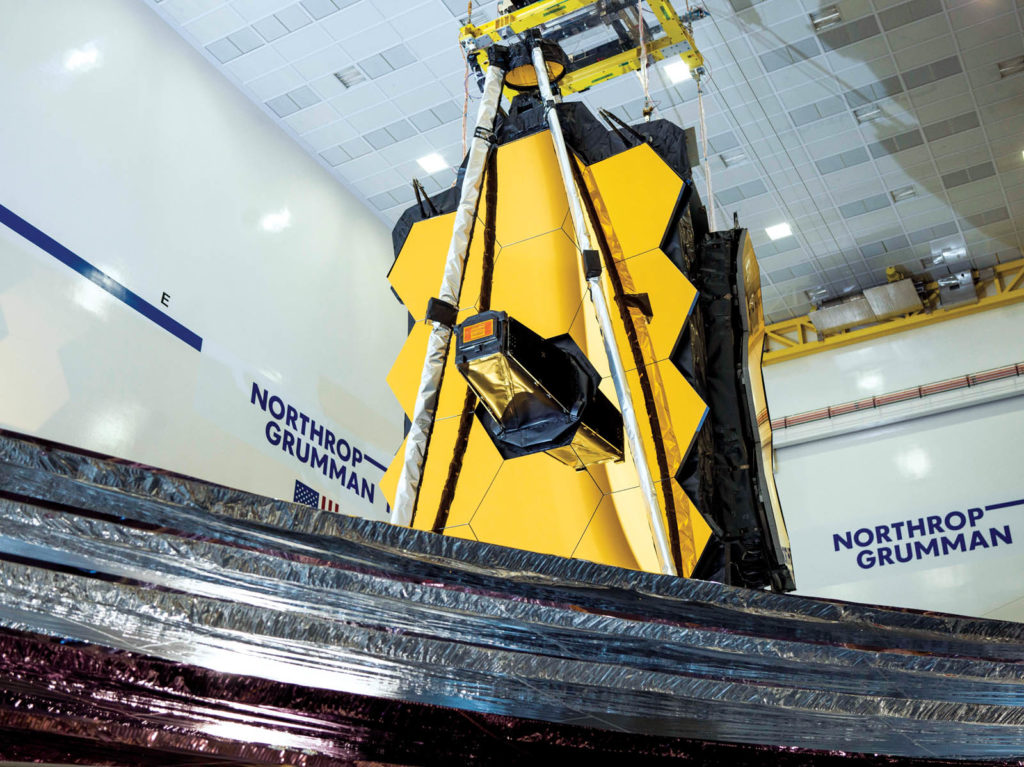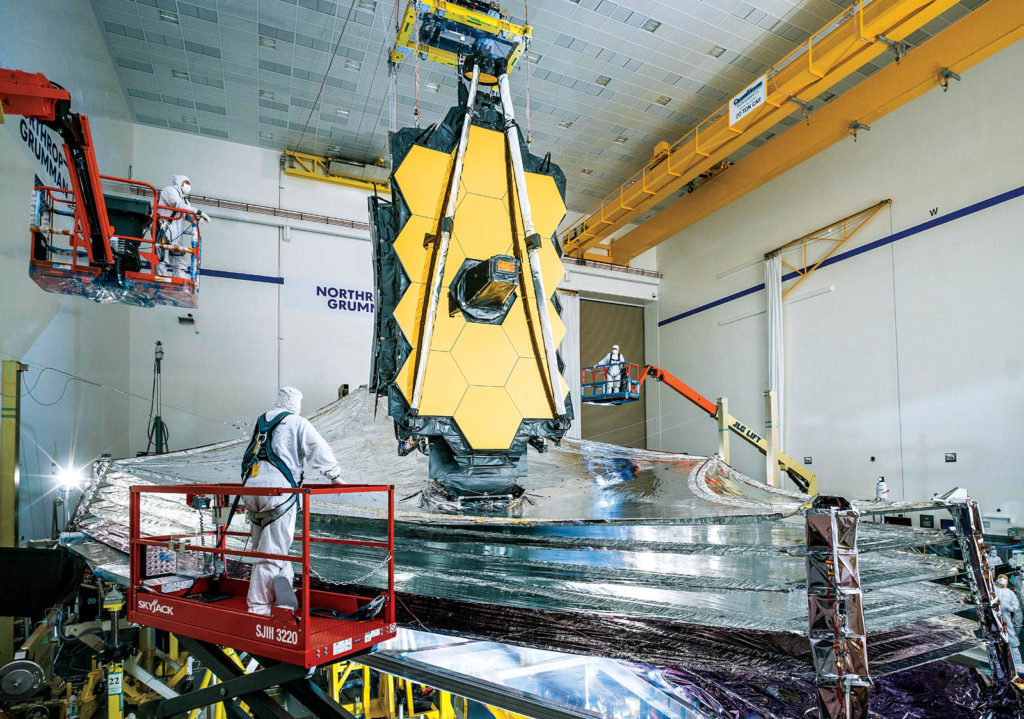
Lengthened to the size of a tennis court, the five-layer sunshield of NASA’s fully assembled James Webb Space Telescope successfully completed a final series of large-scale deployment and tensioning tests in late 2020, according to a NASA press release. This milestone puts the observatory one step closer to its launch later this year.
“This is one of Webb’s biggest accomplishments in 2020,” said Alphonso Stewart, Webb deployment systems lead for NASA’s Goddard Space Flight Center in Greenbelt, Md. “We were able to precisely synchronize the unfolding motion in a very slow and controlled fashion and maintain its critical kite-like shape, signifying it is ready to perform these actions in space.”
The Kapton® polymer-coated membranes of Webb’s sunshield were fully deployed and tensioned in December at Northrop Grumman in Redondo Beach, Calif. Northrop Grumman designed the observatory’s sunshield for NASA. During testing, engineers sent a series of commands to spacecraft hardware that activated 139 actuators, eight motors and thousands of other components to unfold and stretch the five membranes of the sunshield into its final taut shape.

In this test, two pallet structures that hold the sunshield upright folded down; then two huge “arms” (known as the mid-boom assembly) of the sunshield slowly telescoped outward, pulling the folded membranes along with them. Once the arms locked in their horizontal position, the membranes of the sunshield were successfully tensioned individually starting with the bottom layer, separating each into its fully deployed shape.
The sunshield divides the observatory into a warm, sun-facing side (about 185 degrees Fahrenheit) and a cold, space-facing side (minus 388 degrees Fahrenheit) comprised of the optics and scientific instruments. The sunshield will protect the observatory’s optics and sensors so they remain at extremely cold temperatures to conduct science. For more, visit www.NASA.gov.
 TEXTILES.ORG
TEXTILES.ORG


